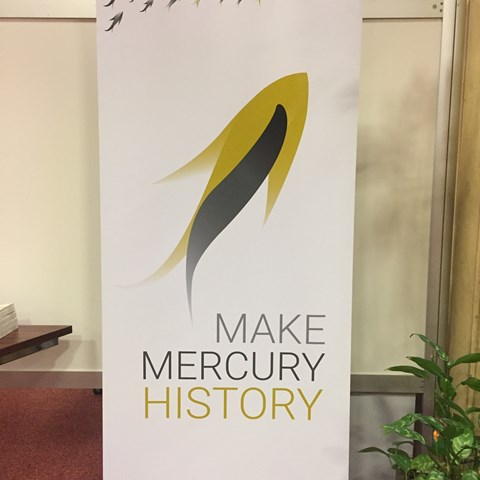Contact
Department of Aquatic Sciences and Assessment, Division of Geochemistry and Hydrology
Department of Aquatic Sciences and Assessment, Division of Geochemistry and Hydrology

About 150 countries met in Geneva from 18th to 23 November on the Second Meeting of the Conference of the Parties to the Minamata Convention on Mercury (COP2), hosted by UN environment. More than one year since Minamata Convention went into force, COP2 was held to strengthen global efforts to reduce mercury emissions and eliminate adverse effects. The SLU researchers Pianpian Wu och Karin Eklöf participated as observers.
Mercury is a global environmental pollutant that may cause neurotoxicity, posing threats to both humans and wild life. World Health Organization even considers mercury one of the top 10 chemical threat to our health. Thus, UN Environment called for a global reaction, Minamata Convention, in October 2013 and it reached 50-ratification milestone in May 2017. The Minamata Convention aims at constraining the use of mercury that includes banning new and phasing out existing mercury mines, as well as reducing mercury releases and emission from all sectors, specifically regulating the informal artisanal and small-scale gold mining (ASGM). Or in another words, make mercury history. In September 2017 UN Environment held the First Meeting of the Conference of the Parties to the Minamata Convention on Mercury (COP1) and gathered the countries with ratification committed to tackle this global pollutant.
At the recent COP2 meeting delegates discussed and adopted decisions on various technical issues regarding the implementation of the Convention, including cooperation with Basel, Rotterdam and Stockholm Conventions, mercury waste thresholds, management of contaminated sites, and interim storage of mercury other than mercury wastes.
Global anthropogenic mercury emission increased 20% from 2010 to 2015, according to what ad-hoc research specialists presented about preliminary findings from UN Environment's upcoming Global Mercury Assessment 2018. The reduction in mercury release and emission from industrial sectors like coal combustion and chlor-alkali plant has been slowly progressing in few regions, while the overall mercury emission keeps on surging mainly due to stationary combustion. East/Southeast Asia, Sub-Saharan Africa and South America account for the three greatest increases in mercury emissions between 2010 and 2015, according to the assessment. On the contrary, there has been modest mercury emission decreases in North America and EU. The rising emissions seen in most other regions are greatly driven by increased economic activity associated with industrial sectors of coal combustion and ASGM. It was highlighted that 20 million people in more than 60 countries are currently impacted by ASGM activities, posing great challenges to the industrial formalization process and the society.
A rough estimation of mercury release to aquatic environment from anthropogenic sources is 600 tons from three main sectors includes mining, energy, and waste treatment and disposal industries. Potential secondary sources of mercury release are slow processes that may take decades or centuries.
SLU has been contributing in the research areas that cover critical mercury biogeochemical processes in Swedish boreal forests, freshwater and marine ecosystems for decades. We have joined UN Environment Global Mercury Partnership since 2017 and listed as observers in both COP1 and COP2 conferences. Pianpian Wu and Karin Eklöf, both from the Department of Aquatic Sciences and Assessment, participated as observers at the recent COP2 conference.
Text: Pianpan Wu
The Minamata Convention: http://www.mercuryconvention.org/